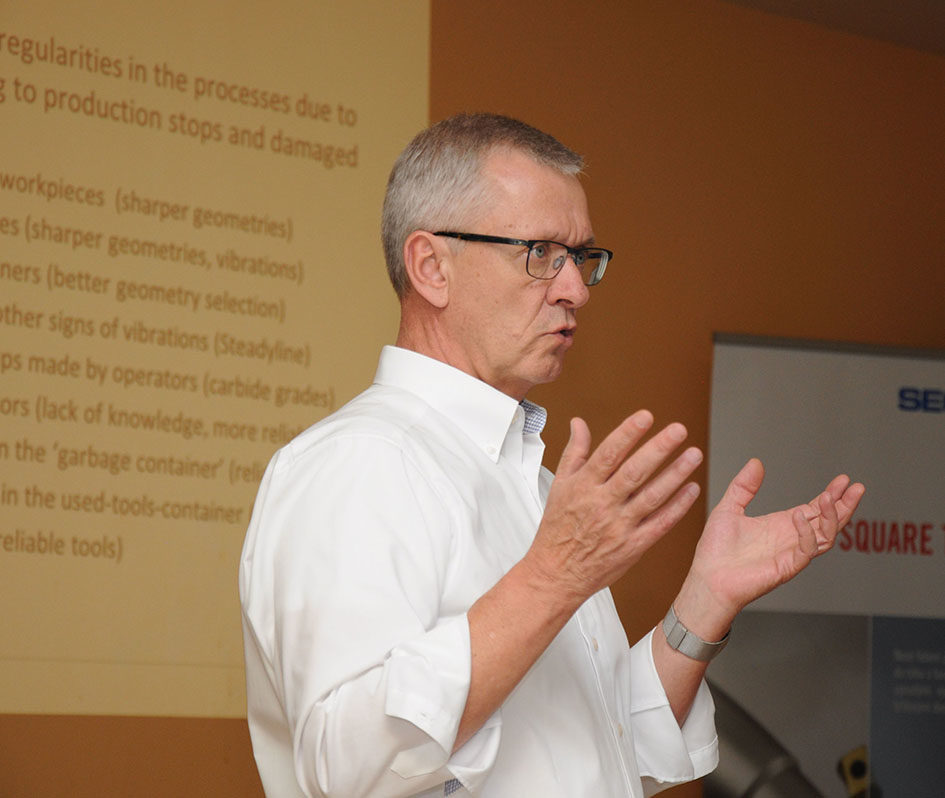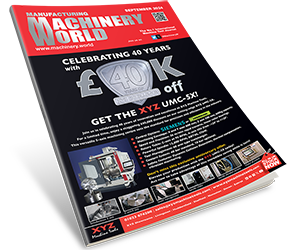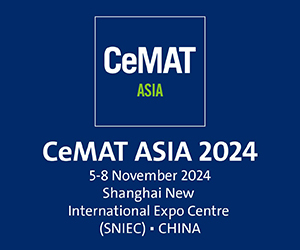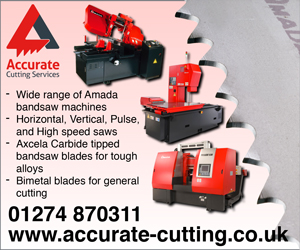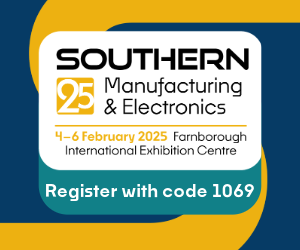Seco’s new and highly-targeted STEP (Seco Technical Education Programme) will, through its three-pronged approach, help component manufacturing companies optimise their machining processes – and, in doing so, improve their competitiveness.
Seco Tools has revamped its highly popular and successful STEP Programme.
The new Programme features three different and distinct levels – STEP Core; STEP Advanced and Next STEP – each one aimed at specific audiences (or ‘levels’ of staff) found within any and every manufacturing organisation…large or small.
Rationale
Many manufacturing companies find themselves in, what Seco calls, a ‘technology gap’.
Being in this gap means that manufacturers are using cutting tools and machining techniques that have been superseded by new products, new technologies…and new thinking and, although many of these same companies may well have secure and reliable machining processes – they find it difficult, without using the latest technologies, to truly and fully ‘optimise’ them.
According to Patrick De Vos, Seco’s Corporate STEP Consultancy and Educational Services Manager, and a principal architect of the new STEP Programme, “process security does not necessarily equate to process optimisation”.
STEP aims to bridge this ‘technology gap’.
The metal cutting process
Generally speaking STEP provides a comprehensive overview of the different elements of a metal cutting process – and describes and explains, using theories and models, the interrelationship and inter-connectedness of these different elements.
The objective underpinning STEP is to provide attendees with a good understanding of the machining process and, in particular and not unsurprisingly considering Seco’s provenance, the behaviour of the cutting tools used in the process.
Explains Patrick De Vos:
“The machining process is complex. Knowledge and understanding of the interaction between the cutting tool and the workpiece material, as well as other process parameters, are key elements in both controlling and optimising – both technologically and economically – the machining process.”
To control and optimise the metal cutting process involves knowledge and understanding of many different and varied elements involved within it. These include e.g.:
- the workpiece (material and geometry),
- the machine tool (power, feeds and speeds, stability etc.,
- the process environment,
- the fixturing systems used for the workpiece and the cutting tool,
- the cutting tool and the cutting conditions,
- the knowledge, experience and expertise of the machine operator.
At the heart of the process is the cutting tool because it is at the cutting edge where all the elements interact and come into play.
Continues Patrick de Vos:
“Metal cutting is a process where the balance between loads/forces from the cutting environment (that act on the cutting edge) and the load bearing capacity of the cutting edge and tool, need to be harmonised to ensure process effectiveness and efficiency.”
STEP provision
STEP is structured so that everybody – from a relative novice in machining techniques to the more skilled professional – can gain practical skills and improve their competencies. By using proven and robust theories and models, STEP course attendees acquire relevant knowledge and skills that can be used (by them) to influence and improve their respective company-specific machining processes.
This is where STEP differs from training and education provision provided by many equipment (machine tools, work holding, CAD/CAM etc.) providers.
Says Patrick de Vos:
“Equipment providers offer training that has a relatively ‘narrow’ focus with the emphasis being on using and exploiting the capabilities and functionality of the equipment in question. But, without a more comprehensive understanding and appreciation of the wider machining process such training has its limitations.”
By using more generic models, knowledge, and information to understand the metal cutting process, STEP can be (and is) a useful precursor to specific equipment training.
As mentioned previously there are three different STEP levels.
- STEP Core
STEP Core comprises a series of practical education and training modules that explain the basics of the metal cutting process and the role and use of tooling within it. Armed with this knowledge, course attendees when back in their workplaces, can make basic tooling choices, identify and determine the cutting conditions for different applications, and identify, intervene and rectify issues and problems as, and even before, they arise.
STEP Core is aimed at machine tool operators, tool setters, programmers, supervisors etc.
- STEP Advanced
STEP Advanced, as its name suggests, provides more specialist training and focuses on the physics of the metal cutting process and on turning, milling, hole-making and threading applications. Using advanced machining models course attendees are able to optimise planning and design-to-manufacture processes, and better predict their outcomes in advance.
STEP Advanced is aimed at production, planning, quality, design and lean managers and co-ordinators.
Both STEP Core and STEP Advanced combine classroom-based learning activities with practical machining demonstrations, and use the latest and most advanced educational resources.
- Next STEP
Metal cutting processes do not exist in isolation – but take place in an economic or commercial environment.
Every metal cutting process is a means to an end – and that end, for all companies, is to produce high-quality components – both in terms of quality and quantity (i.e. production yield) – in a time effective (productivity) and cost-efficient (economical) manner. Next STEP is effectively concerned, therefore, in improving manufacturing companies’ profitability and competitiveness, and encourages manufacturing professionals to take a more holistic view of their entire manufacturing and production processes.
Next STEP is a bespoke technical consultancy-based service provided by Seco aimed at managers and directors, including managing directors and company owners, of individual manufacturing companies.
Summary
The biggest and strongest asset in every manufacturing company is (or should be) its people.
STEP, through its three-pronged approach, ensures that people (or staff) at every level in a company, from shop floor to Board Room, are equipped with the requisite skills and aptitudes to increase their own (and by implications their organisation’s) efficiency and effectiveness – and in doing so ensure that their manufacturing processes are optimised.


